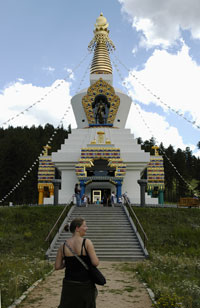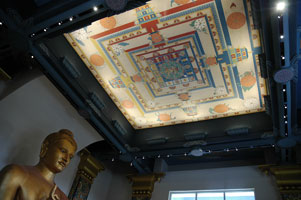My pal JA and I had a writing challenge last week, and I missed the deadline — very unlike me, but JA is a forgiving soul. Well, here’s my story relating to the Grand Canyon a few days late and dollars short:
Have you ever seen that show on the Discovery Channel, I Shouldn’t Be Alive? Well, I’m lucky that I didn’t end up on that show recounting an incident that happened when I was younger.
You see, I was the Queen of Cotton, the Diva of Wet Tents, the Empress of Unpreparedness. I would drive from St. Louis to Colorado in a day and sleep at 10,000 feet that night. I went on hikes above treeline in the afternoon during the summer thunderstorm season. I wore sweatshirts on long hikes with cotton gym shorts, cotton socks, cotton T-shirts, cotton underwear and probably a cotton baseball cap.
Now, I know better. Now, I know how little I knew back then during my first forays into the mountains. I took a wilderness survival course last week and learned even more about how little I know. And the more you know, the more you realize how unprepared you really are.
But when I was the Queen of Cotton, I was blissful in my slow-dry sweatshirt, altitude-sickness-mocking ignorance. And like so many of the tourists I see now at Rocky Mountain National Park and Indian Peaks Wilderness, I survived despite myself. Good luck was my constant companion. But experience started to creep into my bliss like water seeping into the corners of a cheap tent during a rainstorm.
That particular experience — rain seeping into a cheap tent — happened a few too many times for my taste. It only takes one cold night fighting a loosing battle against driving rain to turn your bliss to blah. I spent my college breaks road tripping across the continent with Mr. You-Don’t-Need-Gore-Tex, otherwise known as my college boyfriend. We would spend a week camping out in some far-flung destination on $200 and whatever we’d raided from his mom’s pantry the day before we left. These were amazing experiences. But in hindsight, I wish we’d spent $200 on a quality tent.
Mr. YDNGT — gosh that’s cumbersome, let’s just call him Mr. Cheap — was truly the King of Cheap. I didn’t realize this right away when Mr. Cheap took me on my first soggy camping trip. (I was a Girl Scout, but my mom, our trip leader, always made sure we stayed in the lodge with indoor plumbing at Girl Scout Camp.) I thought it was perfectly natural to be cold, wet and miserable while camping.
Mr. Cheap also took me to buy my first “hiking boots.” These were Hi-Techs, commonly referred to (disparagingly) by those who know better as Sierra Sneakers. Pair these with cotton socks and a stream crossing and you’ve got a blister factory on each foot.
Eventually, experience (read: misery) met materialism at the local outdoor store. I discovered Gore-Tex. I discovered fleece. I discovered tents that looked like they could actually keep rain out and warmth in. I wanted all of it.
Over time, I acquired good boots, a fleece pullover and a waterproof/breathable shell jacket. I still hadn’t acquired the good sense not to go from the flatlands to 10,000 feet in one day, though, and one night I puked my brains out and nursed a mind-numbing headache up at Indian Peaks after starting that morning in St. Louis. Fortunately, I was 20 and therefore relatively invincible; I recovered the next day and hiked.
The Queen of Cotton hadn’t undergone a complete transformation yet, though. A jacket and fleece and boots does not an outdoorswoman make. I was missing all kinds of essential items, and experience (misery) returned to make an example of the Queen on a winter trip to the Southwest that included my second visit to the Grand Canyon.
Both rims of the Grand Canyon are more than a mile above sea level, and when five ill-equipped 20-year-olds arrived on the South Rim one gray, blustery January day, we witnessed a sight we’d never seen — snow flurries. Just flurries, we thought, they’re not accumulating, we’ll be OK. But we found snow packed in amongst the campground’s trees that night, and considering our Mr. Cheap tents, we decided to cram into the van for a toastier night’s sleep.
I left the van in the middle of the night and headed toward the lights of the campground bathroom to pee. I was chilled through when I opened the bathroom door and felt the warm air seeping out into the 20-degree night.
The bathroom was heated. I stood there and soaked it up like a lizard and squinted against the lights. I peed and stood there again. I couldn’t talk myself into returning to the van. I considered going back for my sleeping bag and camping in the bathroom for the rest of the night. The warm air of the dirty campground bathroom was far more comforting than snuggling against Mr. Cheap, who was just as cold as me that night. The $40 sleeping bags he’d bought us and his holey cotton sweatshirt were a tepid testament to our relationship — my warmth was only worth $40, and so was his.
Still, I owe a lot to Mr. Cheap. He took me everywhere from the Blue Ridge Parkway to the Gulf of California to the Canadian Rockies. Our experiences, however miserable, transformed me from the Girl Scout in the lodge into the woman who eventually carried a 50-pound pack to the bottom of the Grand Canyon and back. I carried hundreds of dollars worth of life-saving gear in that pack, and none of it was cotton. I’m now the Queen of Capilene.
Long live the queen.


